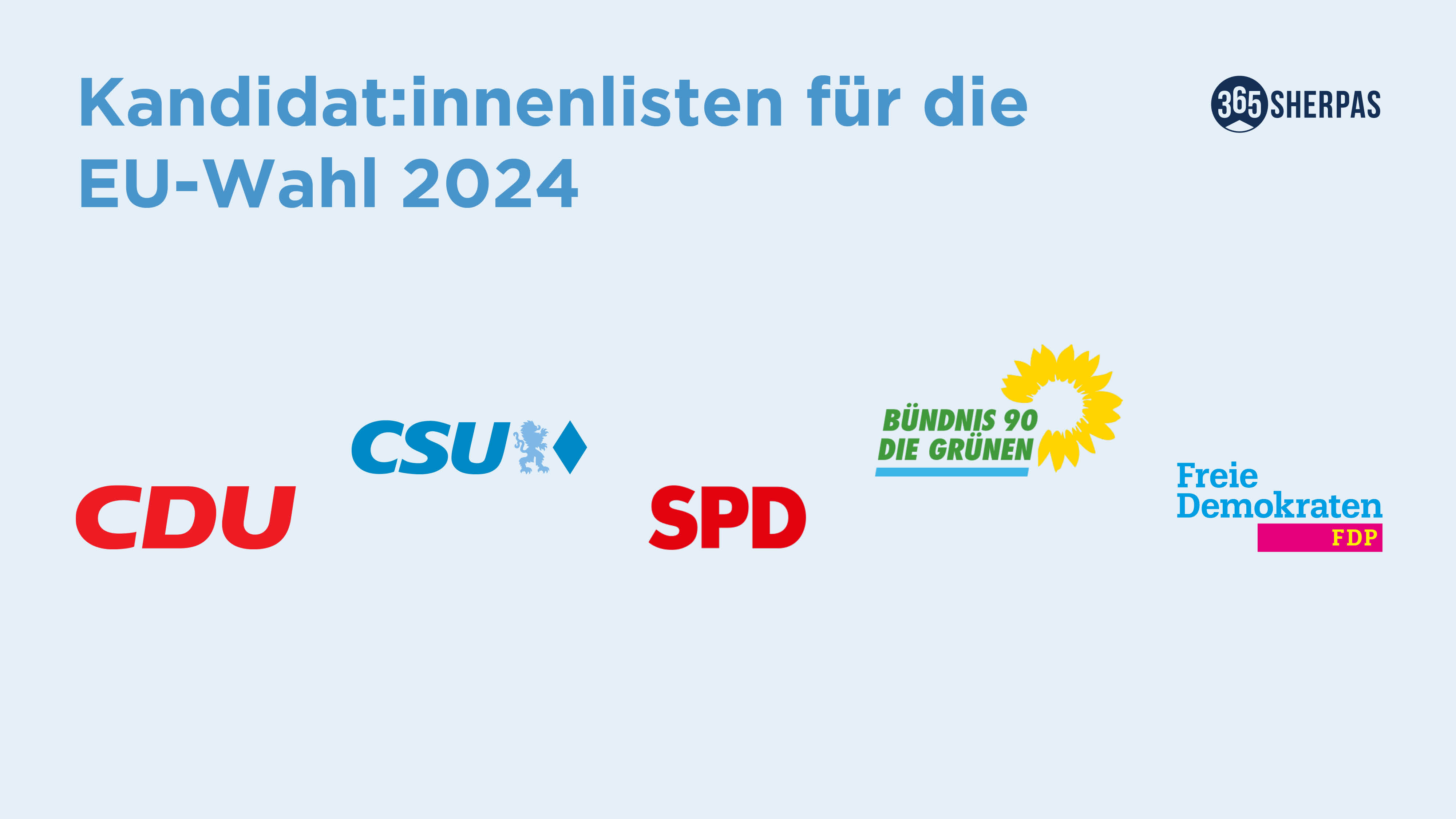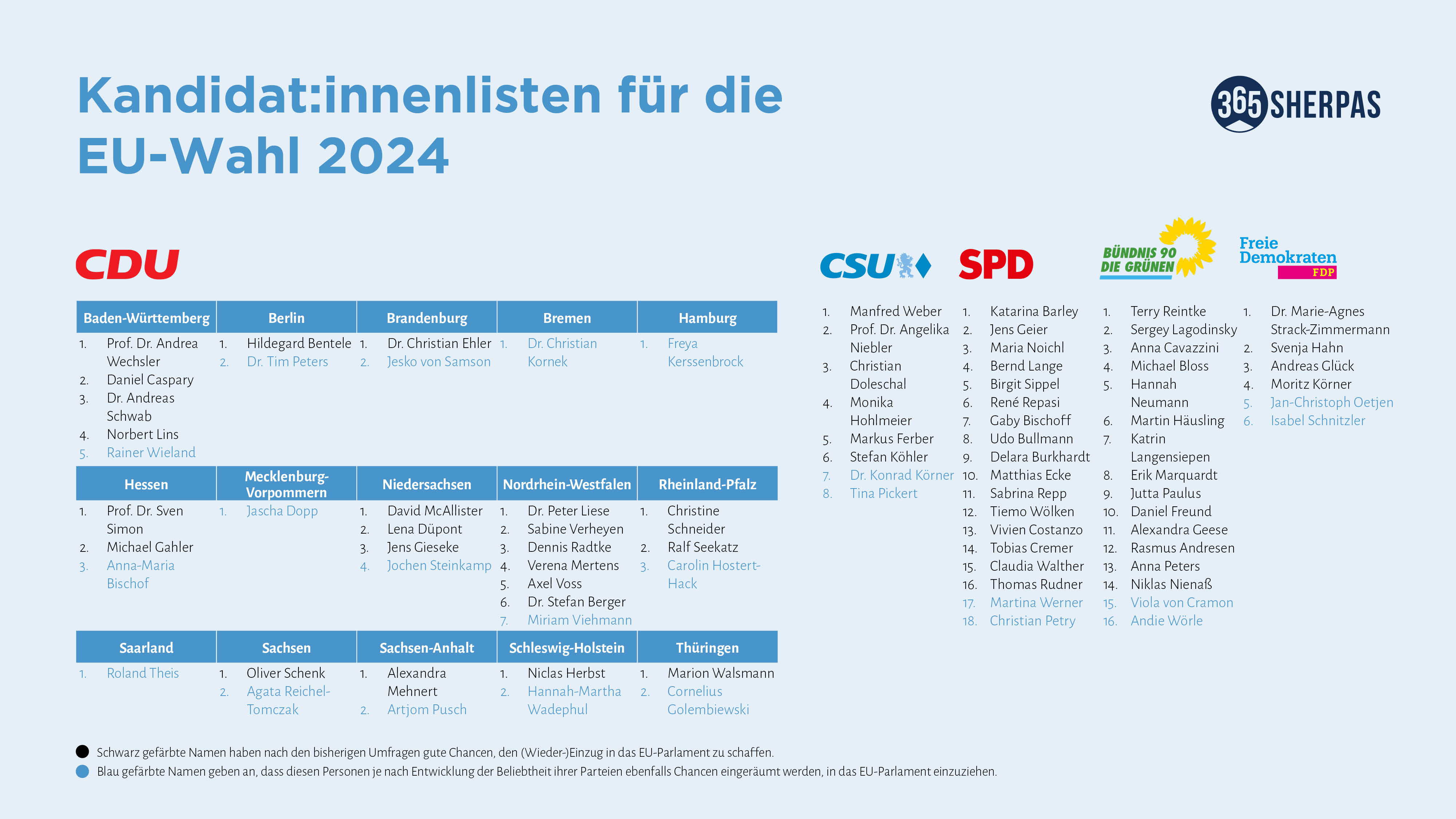On March 29, the Federal Election Committee decided to admit 35 parties and political associations in Germany to the European elections. In addition to the established parties, among others, the Sahra Wagenknecht Alliance and the Last Generation are running for the first time. The full list can be found here.
We have analysed the current polls, and the candidate lists of the major democratic parties in Germany. Our analysis of which candidates have a good chance of entering or re-entering the EU Parliament in the elections – there are many familiar faces among them – can be found down here.
The overview is of course subject to some reservations: firstly, polls are not reliable forecasts. A lot can still change in the two months leading up to the election. Secondly, small parties are often not included in polls. In the 2024 EU elections, there will be no electoral threshold for entry into the EU Parliament. Realistically, a party would have to achieve around 0.5% of the votes to send a candidate to the European Parliament. In the 2019 elections, the Free Voters and the PARTEI each managed to win two seats; Volt, the Animal Protection Party, the Pirates, the Family Party and the ÖDP each won one seat. Germany is entitled to a total of 96 seats in the EU Parliament. If many of the smaller parties manage to gain seats, the larger parties will have correspondingly fewer seats (although the smaller parties often join the existing parliamentary groups after the elections and sit there together with the larger parties).
There are only two months to go until the election date in Germany on June 9. It seems the big election fever has not yet gripped Germany, but May will certainly be intense!


